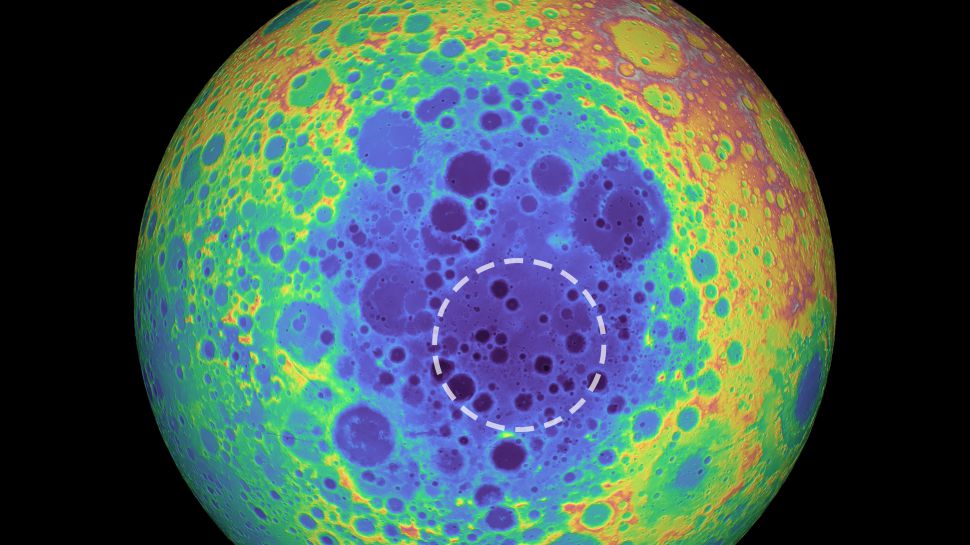
There’s something very weird, and very dense, under the surface of the moon’s South Pole-Aitken basin, new research suggests.
That unexpectedly massive patch may represent the buried remains of an asteroid that crashed into the moon’s surface and formed that basin in the first place. That new hypothesis is based on data from NASA’s Gravity Recovery and Interior Laboratory (GRAIL) and Lunar Reconnaissance Orbiter missions. When the scientists combined the two types of data, they saw a mismatch between the surface topography and the gravitational tug of the moon.
“Imagine taking a pile of metal five times larger than the Big Island of Hawaii and burying it underground,” study lead author Peter B. James, a geoscientist at Baylor University in Texas, said in a statement. “That’s roughly how much unexpected mass we detected.”
The research relied on two key missions in NASA’s moon-exploration portfolio. The GRAIL mission included two spacecraft, which spent more than a year orbiting the moon, with each spacecraft using the other to map the gravitational tug of the moon. The Lunar Reconnaissance Orbiter has spent nearly 10 years at work and has made billions of measurements of the precise height of the moon’s surface.
When it comes to the South Pole-Aitken basin, the topography is particularly striking. The feature is a massive crater stretching 1,240 miles (2,000 kilometers) across the far side of the moon, making it the largest crater planetary scientists know of to date. As the name implies, it’s located near the south pole of the moon as well, and experts believe it was created perhaps 4 billion years ago.
So when the team saw an increase in the gravitational tug of the moon roughly lining up with the neighborhood of the South Pole-Aitken basin, the scientists wondered if the anomaly could trace directly back to the crater itself. “One of the explanations of this extra mass is that the metal from the asteroid that formed this crater is still embedded in the moon’s mantle,” James said.
Another possible explanation for the anomaly, the researchers wrote, is that the area is rich in oxides, which likely would have formed as the moon’s ancient magma ocean cooled and solidified.
However it formed, the fact that the mass anomaly is still so prominent and that it seems to be located about 186 miles (300 km) down also offers scientists an intriguing idea: These facts suggest that the moon’s insides can’t be all that gooey; if they were, the moon’s gravity would pull the massive patch into the lunar center.
The research is described in a paper published April 5 in the journal Geophysical Research Letters.























